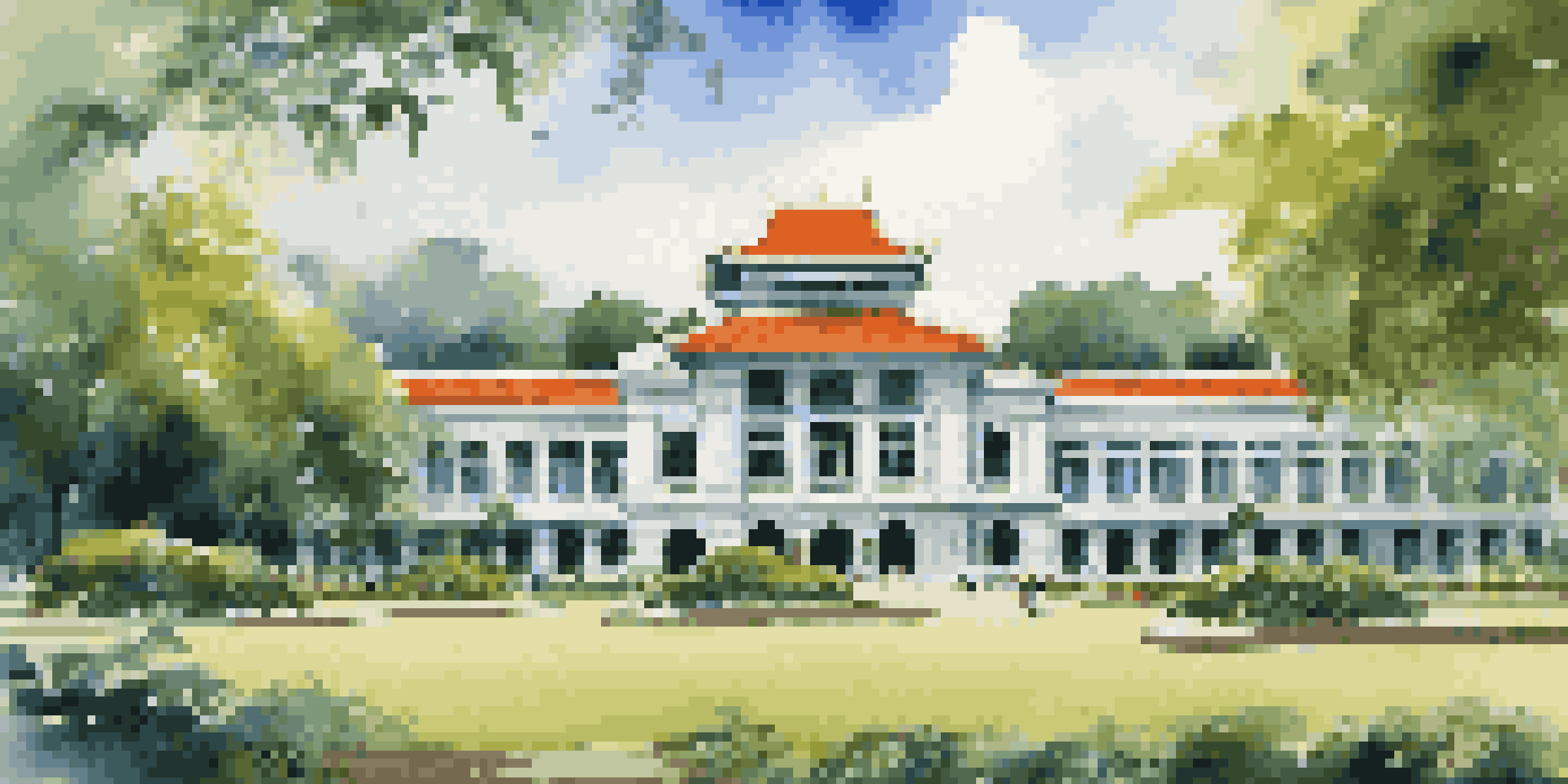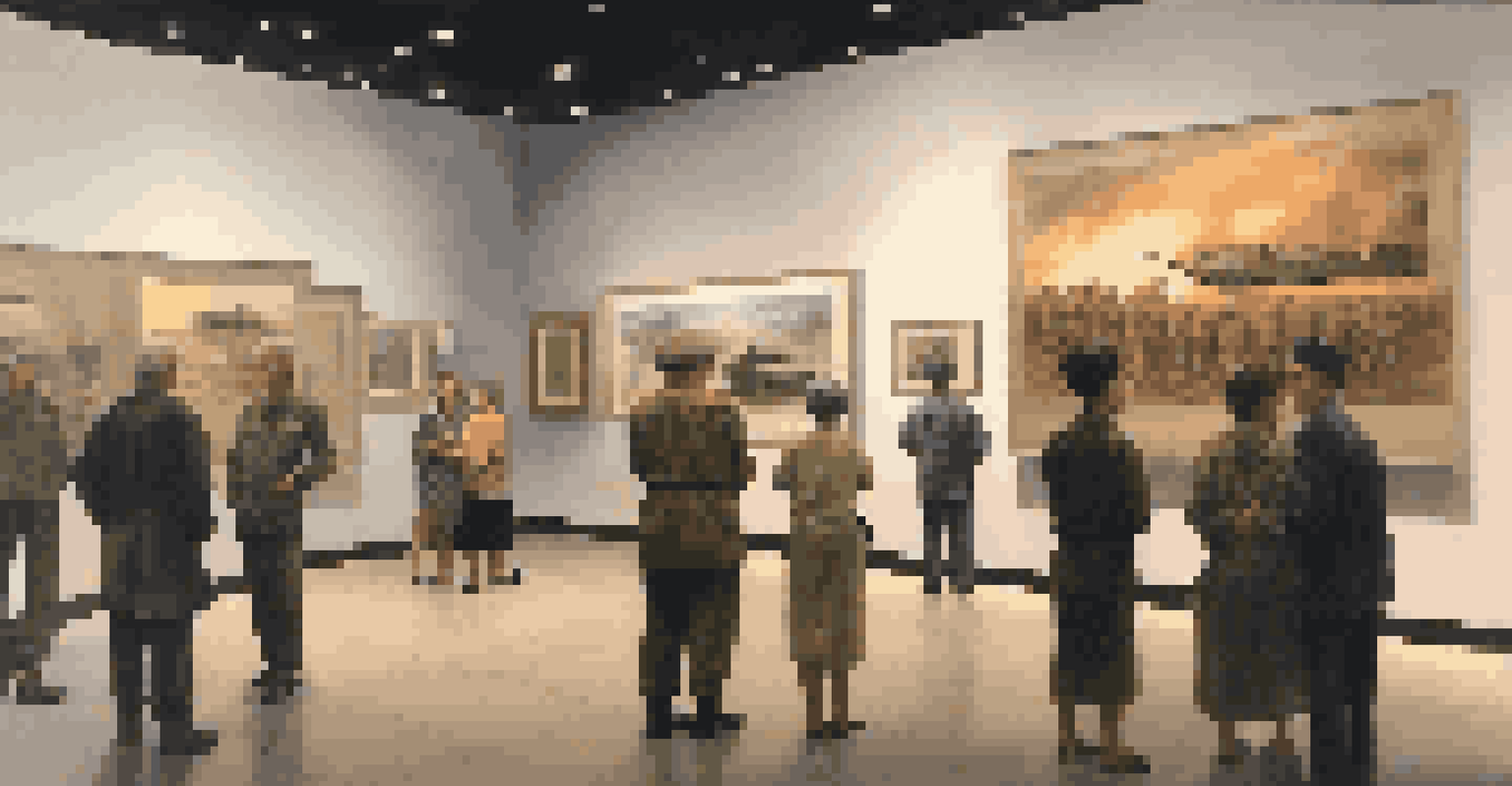Exploring Vietnam's Historic Sites: War and Peace

Introduction to Vietnam's Complex History
Vietnam's history is a tapestry woven with threads of war and peace, reflecting its rich cultural heritage. From ancient dynasties to the more recent conflicts, each chapter tells a story of resilience and hope. Understanding this history is crucial for anyone looking to explore the country’s historic sites, which serve as poignant reminders of the past. As we venture into Vietnam’s historic sites, we will uncover the layers of its narrative and the lessons it offers.
History is not a burden on the memory but an illumination of the soul.
The interplay between war and peace in Vietnam has shaped its identity, making it a unique destination for travelers. Each site is not just a relic of the past but a testament to the spirit of the Vietnamese people. This journey through history will help visitors appreciate the complexities of Vietnam’s legacy, fostering a deeper connection with the land and its people. Let’s embark on this enlightening exploration together.
As we delve into the heart of Vietnam, we’ll discover how these historic sites serve as both memorials and symbols of peace. They offer a chance to reflect on the past while celebrating the present. By visiting these locations, travelers can engage with the stories that have shaped Vietnam, enriching their travel experience and understanding of this fascinating country.
The Cu Chi Tunnels: A Symbol of Resistance
The Cu Chi Tunnels are a remarkable underground network that played a pivotal role during the Vietnam War. Stretching over 200 kilometers, these tunnels were used by Vietnamese soldiers to hide from enemy forces, transport goods, and communicate secretly. Walking through these narrow passages gives visitors a firsthand experience of the ingenuity and resilience of the Vietnamese people during the war. It’s an eye-opening journey into the depths of a significant era in Vietnam's history.

As you navigate the tunnels, you'll encounter booby traps and hidden entrances that illustrate the tactical strategies employed by the Viet Cong. Guides share stories of courage and survival, making the experience both educational and emotional. The tunnels also serve as a reminder of the harsh realities of war, prompting reflection on the cost of conflict. Visitors often leave with a profound sense of respect for those who experienced these challenges.
Vietnam's History: A Story of Resilience
The country's historic sites reveal the enduring spirit of the Vietnamese people through their complex journey of war and peace.
The Cu Chi Tunnels are more than just a historical site; they symbolize the spirit of resistance and the will to overcome adversity. They remind us of the importance of peace and understanding in a world that has often been marred by conflict. This experience can inspire a deeper appreciation for the values of resilience and unity among visitors, making it a must-see on any journey through Vietnam.
The War Remnants Museum: A Glimpse into History
Located in Ho Chi Minh City, the War Remnants Museum offers an unfiltered look at the Vietnam War's impact on the country and its people. Through powerful exhibits and haunting photographs, visitors can understand the war's human cost and the lingering effects it has had on Vietnam. This museum is a crucial stop for anyone wishing to grasp the complexities of Vietnam's past and the ongoing journey towards healing and reconciliation.
The past cannot be changed. The future is yet in your power.
The museum features a variety of artifacts, including military equipment, personal belongings, and detailed narratives that guide you through the harrowing experiences of war. One poignant section is dedicated to the stories of victims of Agent Orange, showcasing the long-term effects of chemical warfare. This powerful storytelling fosters empathy and understanding, reminding us of the importance of peace in the aftermath of conflict.
Visiting the War Remnants Museum is an emotional experience that encourages reflection on the consequences of war and the importance of peace. It serves as a reminder of the resilience of the Vietnamese people and their commitment to rebuilding their nation. By engaging with these narratives, visitors can appreciate the progress made since those turbulent times and the ongoing pursuit of harmony in Vietnam.
Hanoi's Hoa Lo Prison: From War to Reflection
Known as the 'Hanoi Hilton' by American POWs, Hoa Lo Prison is a site steeped in historical significance. Originally built by the French in the late 19th century, it later became a notorious prison during the Vietnam War. Today, the site serves as a museum, offering insights into the harsh conditions endured by prisoners and the resilience of those who fought for their freedom. Exploring this prison allows visitors to confront the dark chapters of history while reflecting on the journey toward peace.
As you walk through the cells and exhibits, the stories of both Vietnamese and American prisoners come to life. The museum presents a balanced perspective, highlighting the experiences of all those affected by the war. This duality helps visitors grasp the complexities of conflict and the importance of understanding different viewpoints. It’s a powerful reminder of the need for empathy and reconciliation in our world today.
Cu Chi Tunnels: Symbols of Resistance
The Cu Chi Tunnels exemplify the ingenuity and resilience of the Vietnamese during the Vietnam War, showcasing their struggle for survival.
Hoa Lo Prison serves as a poignant symbol of the past, encouraging reflection on the nature of conflict and the pursuit of justice. It invites visitors to contemplate the sacrifices made for freedom and the importance of fostering peace. By engaging with this history, travelers can leave with a renewed commitment to promoting understanding and harmony in their own lives.
My Lai Massacre Memorial: Honoring the Victims
The My Lai Massacre Memorial stands as a somber reminder of one of the darkest days in the Vietnam War. In March 1968, hundreds of unarmed Vietnamese civilians were killed by U.S. Army troops, an event that sparked outrage and led to significant changes in U.S. military policy. Visiting this site is a powerful experience, offering a chance to honor the victims and reflect on the devastating consequences of war. It serves as a poignant reminder of the importance of human rights and the need for accountability.
At the memorial, visitors can explore exhibits detailing the events of that tragic day and the subsequent efforts for justice. The site encourages contemplation about the impact of violence on innocent lives and the lasting scars left by such tragedies. It’s a place that urges us to remember the past so that we can work towards a more peaceful future. Engaging with these narratives can inspire visitors to advocate for peace and understanding in their own communities.
The My Lai Massacre Memorial is a testament to both the tragedy of war and the resilience of humanity. It serves as a call to action for all who visit, reminding us of our shared responsibility to promote peace and prevent such atrocities from happening again. By honoring the victims and reflecting on their stories, we can foster a deeper commitment to compassion and justice in our world.
The Reunification Palace: A Landmark of Change
The Reunification Palace, also known as Independence Palace, is a historical landmark that symbolizes the end of the Vietnam War. In 1975, the fall of Saigon marked a significant turning point, and this palace served as the site of that historic event. Today, visitors can explore its grand architecture and lush gardens, while also learning about the events that transpired within its walls. This site embodies the transition from war to peace and the hope for a united future.
As you walk through the palace, the rooms are filled with artifacts and photographs that tell the story of Vietnam's turbulent past. The war rooms, in particular, provide insights into the strategic decisions made during the conflict. This glimpse into history allows visitors to appreciate the complexities of the decisions that shaped the nation. It’s a reminder that history is often shaped by the choices made during times of conflict.
War Remnants Museum: Lessons in Peace
The War Remnants Museum provides an unfiltered perspective on the human cost of war, fostering empathy and a commitment to peace.
The Reunification Palace stands as a beacon of hope and resilience, encouraging visitors to reflect on the importance of unity and reconciliation. It serves as a reminder that peace is a journey that requires effort and understanding. By engaging with the stories of the past, travelers can gain a deeper appreciation for Vietnam’s ongoing journey towards healing and progress.
Conclusion: Embracing Vietnam's Legacy of War and Peace
As we conclude our exploration of Vietnam's historic sites, it’s clear that the country’s journey through war and peace is both complex and inspiring. Each site we've visited offers a unique perspective on the resilience of the Vietnamese people and their commitment to rebuilding their nation. These stories are not just remnants of the past; they are vital lessons for future generations. By embracing this legacy, we can all contribute to a more peaceful world.
Visiting these historic sites provides an opportunity to reflect on the consequences of conflict and the importance of understanding different perspectives. As we engage with these narratives, we foster empathy and a deeper connection with those who have lived through such experiences. This journey through Vietnam's history can inspire us to advocate for peace and justice in our own lives, regardless of where we come from.

Ultimately, the exploration of Vietnam's historic sites is more than a journey through time; it’s an invitation to engage with the past and shape the future. By honoring the experiences of those who came before us, we can build bridges of understanding and compassion. As we leave Vietnam, let’s carry these lessons with us and work towards a world where peace prevails.